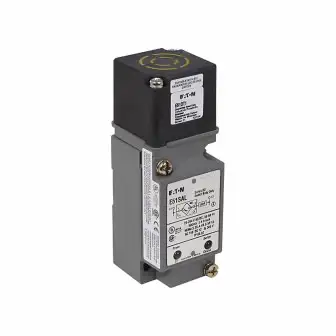Frequently Asked Questions
What is the significance of terminal identification on these Eaton plug-in limit switch operators?
The nameplate of these switch operators has terminal identification for easy visual wiring verification.
What types of targets can be detected by Eaton E51 Series glass fiber optic sensors?
These sensors can detect a wide range of targets, including metal, plastic, glass, and liquid.
How can the sensitivity and response time of Eaton E51 Series glass fiber optic sensors be adjusted?
The sensitivity and response time of these sensors can be adjusted by varying the distance between the sensing head and the target.
What are the maintenance requirements for Eaton E51 Series glass fiber optic sensors?
These sensors require minimal maintenance. Regular visual inspections can be done to check for any signs of damage or wear and tear, and the sensing head can be cleaned with a soft cloth or brush and non-abrasive cleaners to remove any dust or debris that may affect its operation.
What safety precautions should be taken when using Eaton E51 Series glass fiber optic sensors?
When using these sensors, it is essential to follow safety precautions to prevent accidents and injuries. Proper installation, grounding, and wiring should be done to avoid electrical hazards. The sensors should only be used for their intended purpose, and exposure to extreme temperatures or harsh environments should be avoided. Also, ensure that only trained and authorized personnel have access to the sensors and that proper lockout / tagout procedures are followed during maintenance or repair.
 Change Country
Change Country
